Tags :: Romance

An Elemental misstep: Does Pixar still need — or benefit from — anthropomorphic fantasy?
What if the four elements had feelings? Pixar filmmaker Peter Sohn’s gentle, compassionate storytelling may have something to offer family audiences … if he can break away from what has become a rut in Pixar thinking.
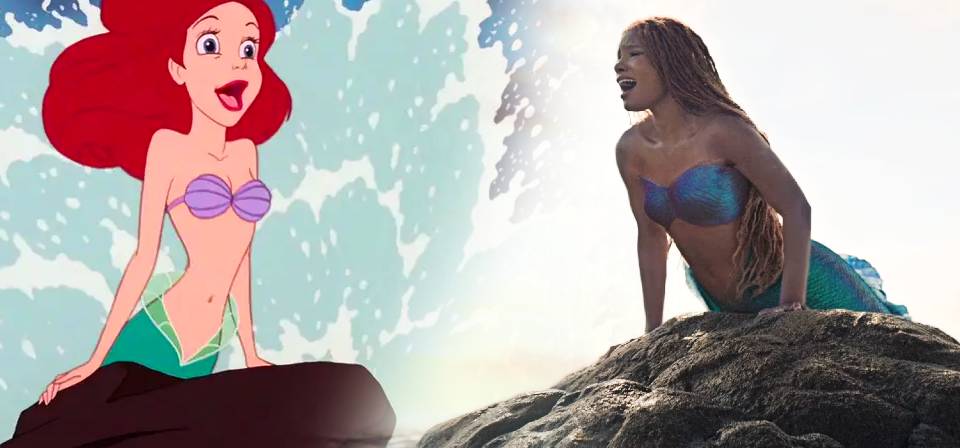
A deep dive: The Little Mermaid then and now
There’s something profoundly melancholy about Disney returning, in its present state of creative exhaustion and corporate decadence, to The Little Mermaid — the nucleus from which the entire Disney renaissance exploded, in a way along with everything that has followed.

Groundhog Day at 30 and the riddle of Bill Murray
Thirty years on, the spiritually evocative, time-bending comedy is as beloved as ever, but its legendary star has been subjected to new scrutiny over reports of inappropriate behavior.

Cyrano (2021)
Dinklage swaggers and glowers magnificently and sings decently, but he’s at his best in quiet, intimate moments, especially with Roxanne and with his confidante Le Bret, the only one who sees his pain.
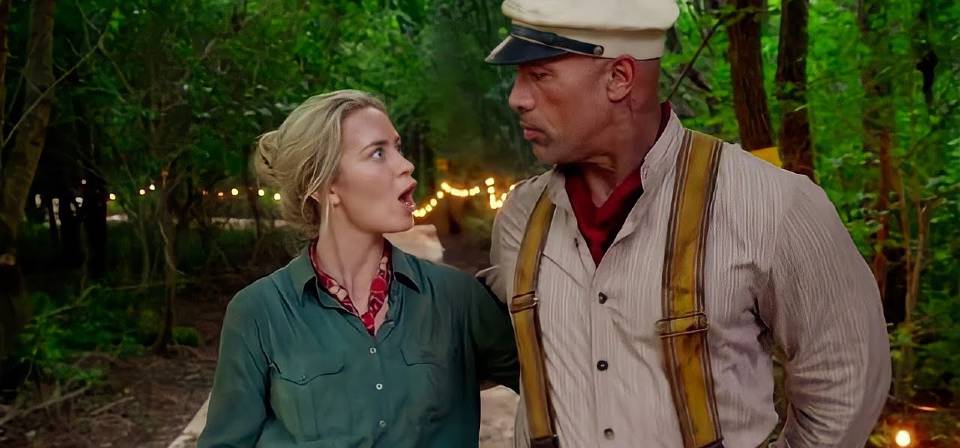
Jungle Cruise (2021)
Dwayne Johnson and Emily Blunt are highly watchable, but Disney’s latest theme-park movie trails haplessly in the wake of Pirates of the Caribbean without a ghost of its inspiration.
![The Shape of Water [video]](/uploads/articles/shapeofwater.jpeg)
The Shape of Water [video] (2017)
Not the year’s better film starring Sally Hawkins as a handicapped dreamer with an inarticulate, seemingly almost subhuman lover.
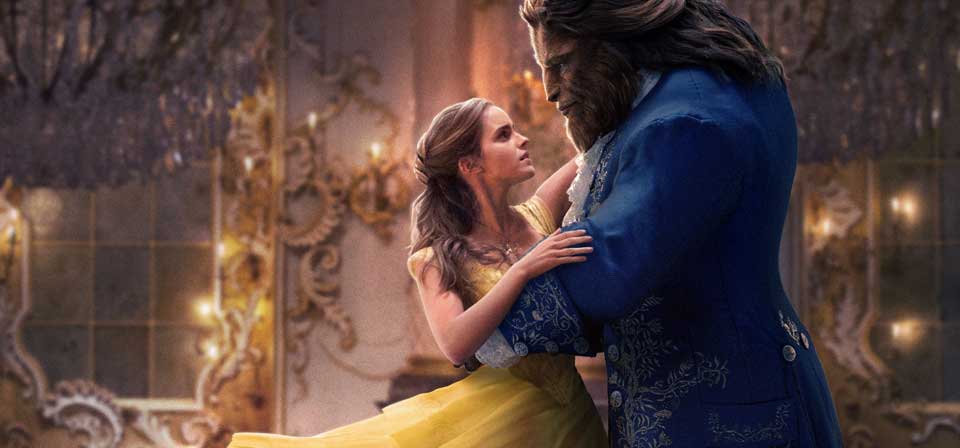
Beauty and the Beast (2017)
Can a realistically computer-rendered French gilt bronze candelabra be debonair? Jaunty? Rakish, even?

Paterson (2016)
For the second year in a row, my favorite film is a winning love story named for an urban area more or less in my backyard.
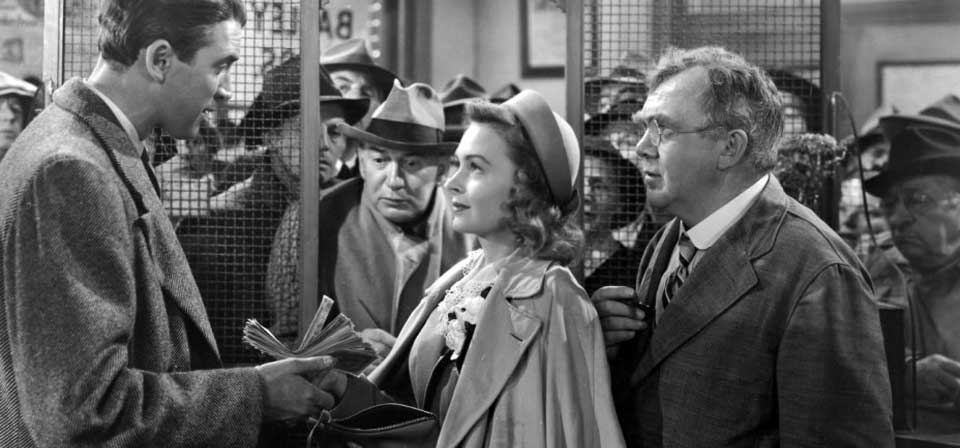
It’s a Wonderful Life (1946)
The truth is that It’s a Wonderful Life is both darker and more subversive than its popular reputation as cheery holiday “Capra-corn” would suggest, and more robustly hopeful than cynics and hipster deconstructionists would have it.
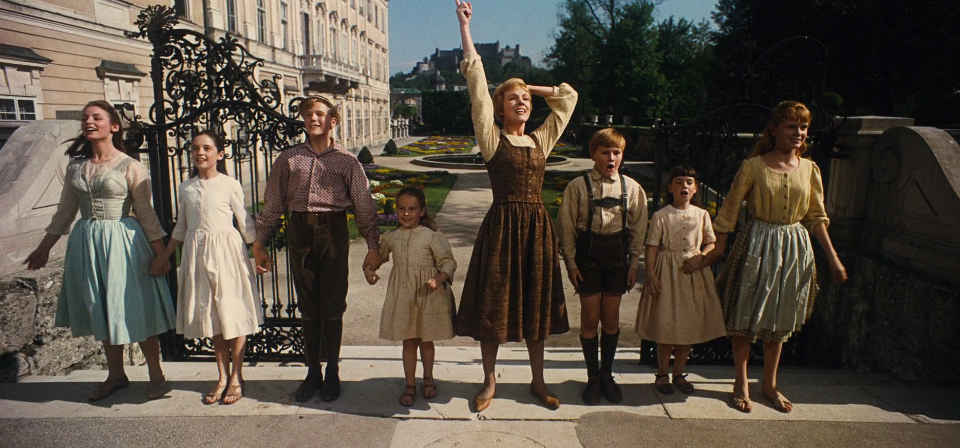
The Sound of Music (1965)
Half a century later, The Sound of Music is probably still the world’s favorite big-screen stage musical adaptation. Joyous, gorgeous, comforting, full of (almost) uniformly spectacular songs, the film’s emotional power is irresistible, even for the many critics, such as Pauline Kael, who hated its shallowness and emotional manipulation.

Sullivan’s Travels (1941)
The comic genius Preston Sturges believed that laughter is the best medicine, and that what people in hard times want is to forget their troubles and escape for 90 minutes or so into a world of lighthearted comedy, snappy repartee and slapstick silliness.
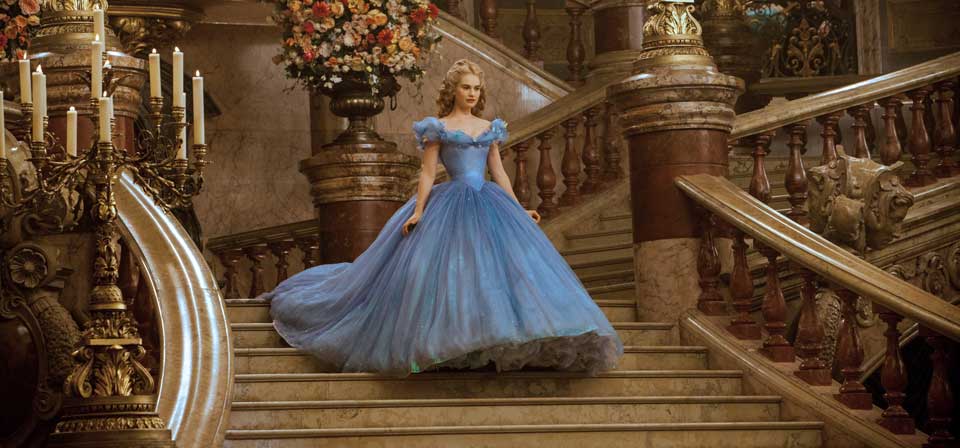
Cinderella (2015)
Kenneth Branagh’s Cinderella is such a gallant anachronism, such a grandly unreconstructed throwback, that it offers, without ever raising its voice, a ringing cross-examination of our whole era of dark, gritty fairy-tale revisionism.
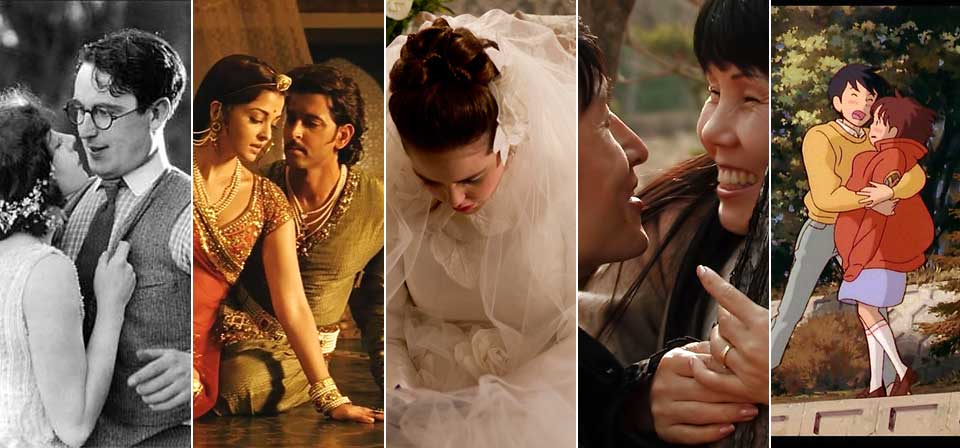
My Top 10 Favorite Movie Love Stories That Don’t Show Up on Romantic Movie Lists
No Jane Austen or Shakespeare. No Hepburn or Cary Grant, Meg Ryan or Tom Hanks. No Say Anything or Jerry Maguire, no City Lights or Sunrise: A Song of Two Humans. Nothing against any of the above, but you don’t need me to tout them. Instead, here are ten films you might not find on other lists of movie romances.

The easygoing Catholicism of Return to Me
Return to Me has an easygoing Catholic vibe akin, but not identical, to Golden Age Hollywood piety; in fact, the movie blends nostalgia and irreverence for the Catholic Hollywood of Bing Crosby’s era.
![The Theory of Everything [video]](/uploads/articles/theoryofeverything.jpeg)
The Theory of Everything [video] (2014)
Stephen Hawking and Jane Wilde’s 30-year-marriage gets the Wikipedia treatment, if Wikipedia were prettier, and sanitized.
The Hundred-Foot Journey [video] (2014)
While I didn’t care for this movie as much as I hoped I would, I will say I went right from the theater to an Indian restaurant, where I got something I enjoyed more.
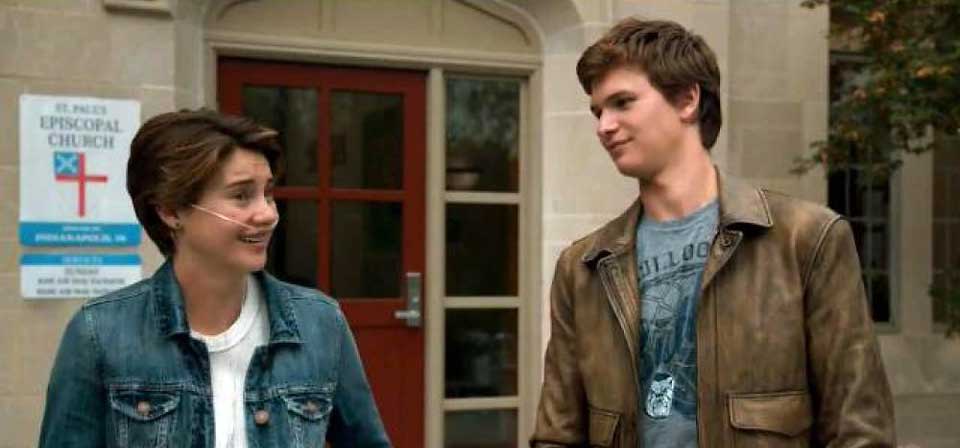
The Fault in Our Stars (2014)
The Fault in Our Stars — in cinematic as well as literary form — cares quite a bit about silly questions, such as the meaning of life and death and love and suffering in a universe sliding toward oblivion, and whether there is Something beyond giving some larger context to our existence, choices and experiences.
Grand Hotel (1932)
Grand Hotel was the first film in history to fully realize the power of the Hollywood star system — the first all-star ensemble Hollywood film.
Footloose (2011)
The upshot is that this new Footloose is a dumbed-down, sexed-up take on a story that was already risqué and not too bright — one that shies away from the ’84 film’s critique of the church, but is also further from its lingering Christian worldview.
Crazy, Stupid, Love (2011)
In spite of these problems, I’m more struck by the movie’s generosity and empathy toward all its characters, and by its frank, countercultural clarity that acts such as adultery, divorce, casual sex and promiscuity — however understandable they may sometimes be, and however seemingly rewarding they may feel at the time — not only don’t lead to lasting happiness, not only are obstacles to true happiness, but ultimately bring a great deal of unhappiness, not only for oneself and one’s loved ones, but also to other people as well that another movie might not consider at all.
Larry Crowne (2011)
It is with some astonishment that I realize that until now Tom Hanks and Julia Roberts have never played romantic leads opposite each other in a romantic comedy.
Red Riding Hood (2011)
Red Riding Hood is a movie of a sort that I would very much like to see if anyone could make it, which is another way of saying that it is not that sort of movie at all. A real Hollywood fairy tale is the rarest thing in the world. Hollywood is more comfortable with myth and legend. Partly, I think, it’s a matter of scale: Mythology provides the sort of sweeping, epic scope that lends itself to big-screen Hollywood feature filmmaking. Fairy tales are smaller and more intimate, and require a lighter touch.
The Adjustment Bureau (2011)
Part Hollywood romance, part paranoia thriller,The Adjustment Bureau is an enjoyable romp in large part on the strength of Damon and Blunt’s likability and chemistry — qualities notably absent in recent star vehicles like The Tourist and Knight and Day.
Tangled (2010)
We really do accept as normal whatever we’re raised with, don’t we? Like, say you’ve lived all your life alone in a lonely tower in a hidden valley, and your golden hair is 70 feet long, and the only mother you’ve ever known — the only person you ever see — comes and goes using your hair as a rope ladder, and she’s never let you so much as set one foot outside, and your hair does this magic trick when you sing that — well, not to give it away, but that would just be life to you, wouldn’t it?
Beauty and the Beast (1991)
At the intersection of great animated films, great filmed stage musicals, and great fairy-tale romances, Disney’s Beauty and the Beast stands alone. Directed by Gary Trousdale and Kirk Wise, it is simply the quintessential Disney masterpiece, the perfection of everything that Cinderella, Alice in Wonderland, Sleeping Beauty and The Little Mermaid aspired to.
The Switch (2010)
The Switch is about an attractive woman in her early 40’s with a history of unfortunate relationships and a gnawing concern that she’s been hitting the snooze button on her biological alarm clock for too long. I can’t imagine why they cast Jennifer Aniston.
Flipped (2010)
Juli Baker and Bryce Loski live in different worlds. She lives on one side of the street, he on the other. Bryce, whose family is the picture of Eisenhower-era suburban respectability, learns from his father’s disdain that the Bakers aren’t; Juli is blissfully unaware either of the Loskis’ well-to-do-ness or of her own family’s hardships. They see each other every day from the time they are seven without ever really seeing each other.
Scott Pilgrim vs. the World (2010)
Among the least inspiring phrases in the English language, I wrote in my review of Prince of Persia: The Sands of Time, is “based on a video game.” Scott Pilgrim vs. the World is not based on a video game, but video games are part of its artistic DNA, along with comic books, anime, kung fu movies and music videos. Big difference.
Night Train to Munich (1940)
If the two British twits on the titular train in Carol Reed’s overlooked, entertaining Night Train to Munich seem to have wandered in from another movie, it’s because they have.
Knight and Day (2010)
Little things like plot holes and leaps in logic shouldn’t matter that much when a movie like this is working. Watching Cary Grant and Audrey Hepburn in Charade is a lot of fun even if you’re not completely sure afterward exactly what happened. If True Lies works for you, it’s because of how Arnold and Jamie Lee Curtis sell it, not because the story makes so much sense. When you find yourself nit-picking plot points and character motivations, it’s a sign the movie isn’t working.
The African Queen (1951)
Crocodiles, tsetse flies, mechanical difficulties, African rains and burning sun, sickness, an erratic helmer — all these and more plagued the shooting of The African Queen, no less than the onscreen journey of the African Queen down the Ulonga–Bora River during the first World War.
Julie & Julia (2009)
Toward the end, the two storylines almost converge as Julie’s blog comes to Julia’s attention — and Julia’s reported response leaves Powell in tears. How that twist strikes you make depend in part on which storyline you have felt closer to, on whose movie it is for you. Either way, there’s something for everyone, and if there’s a couple of brief bedroom scenes, for once they involve happily married couples.
Crazy Heart (2009)
Crazy Heart’s turning point becomes a moment of clarity not only for Bad, but for Jean as well. It’s a film that is more hopeful and redemptive than its characters have a right to be, but along with hope is awareness of potentially irrevocable consequences.
Bright Star (2009)
Luminous, exquisitely acted and not without a sense of humor, Jane Campion’s Bright Star contemplates how this graceful, stylish, ignorant, sharp-tongued girl ensnared, and was ensnared by, a struggling young Romantic poet with no income and no critical acclaim.
The Twilight Saga: New Moon (2009)
Twilight and New Moon are essentially uncritical celebrations of that overwrought, obsessive passion that is the hallmark of immaturity — passion that wholly subordinates all sense of one’s own identity and elevates the beloved to summum bonum, or even the sole good; passion that leaps as readily to suicidal impulses and fantasies as to longing for union.
Adam (2009)
Writer–director Max Mayer gets a lot right about Asperger syndrome, or AS, from Adam’s verbal literalism and scrupulous honesty to his difficulty gauging emotions in others and assessing what is socially acceptable or not; from his difficulty with eye contact to his driving fascination with a narrow range of topics and cultivation of extensive knowledge and technical vocabulary on those topics.
My Life in Ruins (2009)
Ironically, while paying lip service to Georgia’s high standards, My Life in Ruins really has its sights set on Nico’s lowest-common-denominator approach. Although the film shoot was granted unprecedented access to shoot in some of Greece’s most historically significant sites, including the Acropolis, there’s little effort to communicate any real sense of the history and significance of the sites.
Twilight Appeal: The cult of Edward Cullen and vampire love in Stephenie Meyer’s novels and the new film (2008)
Chastity is a precious thing, and the struggle to be chaste is both an inevitable part of a moral life and a legitimate subject for narrative art. In part, this quest for chastity may legitimately form some part of Twilight’s appeal. At the same time, a narrative that wallows in the intoxicating power of temptation and desire, that returns again and again to rhapsodizing about the beauty of forbidden fruit, may reasonably be felt to be a hindrance rather than an affirmation of self-mastery.
The Terminal (2004)
The story wobbles between plotlines and characters that make emotional sense and ones that don’t. And the climax (hastily rewritten and reshot mere weeks before opening day) is pretty much unsalvageable. In Spielberg and Hanks’s professional hands the whole package remains passably entertaining, but much of it doesn’t bear thinking about afterwards — not because the premise is implausible, but because, granted the premise, characters do things that no one would, or should, do under those circumstances.
Once (2007)
At once delicate and gritty, wistful and deeply satisfying, John Carney’s Once is a intimate little film that, like a favorite song, you would rather play for someone than try to describe.
Caramel (2007)
As the name implies, Caramel is a gooey, insubstantial confection, often sweet, occasionally cloying, sometimes sticky — in many respects about on a par with the likes of Beauty Shop. The humor is broad, characters stereotypical, the situations formulaic. Yet there’s no good–bad character divide, no requisite A‑story conflict, and few tidy resolutions.
Juno (2007)
Yet it’s right around this point that Juno, which has been clever and insightful, unexpectedly reveals hidden layers of complexity and depth.
Lars and the Real Girl (2007)
Lars Lindstrom goes through life doing his utmost not to. Every day he negotiates his world as an obstacle course, and the obstacles are other people. The awkwardness of proximity that many people feel in a crowded elevator as they avoid eye contact with strangers and put conversations on hold is how Lars feels with anybody, anywhere. You could say he is socially maladjusted, except I’m not sure he could be called anything with “socially” in it.
The Namesake (2007)
At the end of its 122 minutes, perhaps, few if any of the story’s various partial threads have really been resolved. Open-ended and somewhat scattered, The Namesake is generally engaging but feels elusively incomplete. One could say it is about the journey rather than the destination. A more disciplined approach to the screenplay might have distilled Lahiri’s 300-page novel into something more satisfyingly focused. Instead, frequent Nair collaborator Sooni Taraporevala chooses to sketch in and gesture at as much of the book as possible, trusting viewers to supply the rest.
One Night with the King (2006)
Christians lamenting the state of Hollywood sometimes flippantly comment that this or that Bible story “would make a great movie — intrigue, sex, violence, spectacle, etc.” This, though, is not a recipe for a great movie, but for a mediocre one. The story of Esther could certainly be made into a great film. One Night with the King is not that film. In some ways, it’s not even that story.
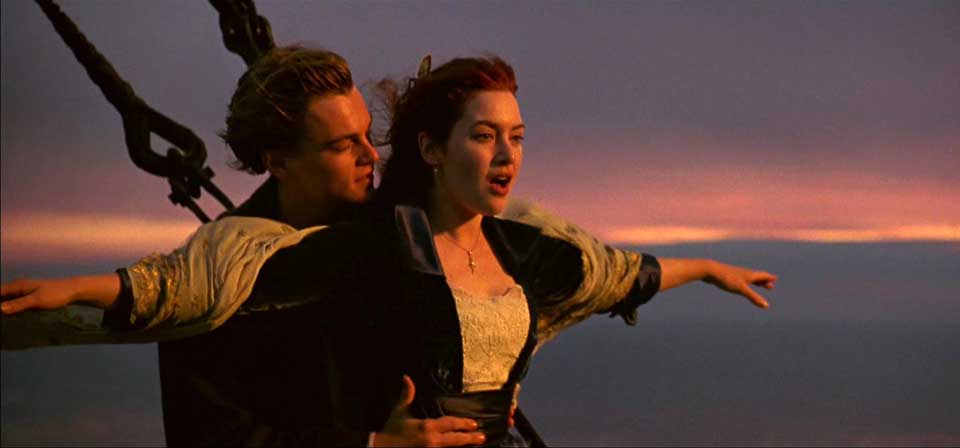
Titanic (1997)
It kills me to say it, but give the devil his due: James Cameron is the king of the world.
The Illusionist (2006)
A moody, atmospheric fairy tale, The Illusionist is the story of one illusionist — Eisenheim, a fictional turn-of-the-last-century magician — being told by another, writer-director Neil Burger ( Interview with the Assassin).
To Have and Have Not (1944)
Howard Hawks’s more or less in-name-only adaptation of Ernest Hemingway’s “worst novel,” has more in common with Casablanca (including nearly half a dozen players) than with its ostensible source material. Its real claim to fame, though, is the first pairing of Humphrey Bogart and Lauren Bacall, who appeared together in only three other films but remained ever after linked off the screen.
Pride & Prejudice (2005)
This is no slight to the BBC miniseries; its glory is precisely its wonderfully literary quality. By contrast, the 2005 film is wonderfully non-literary. The BBC miniseries is peopled with living, breathing characters; the 2005 film is peopled with living breathing human beings. This is not to diminish the definitive achievement of the BBC miniseries, but to appreciate the freshness of a retelling that does something new.
The Awful Truth (1937)
One should be rooting for Cary Grant to get the girl, which means he ought to deserve her — and if that’s more or less the case here, well, it’s only because the girl turns out to be no great shakes either.
His Girl Friday (1940)
Call me an Albany-living mama’s boy, but when Hildy tells her male colleagues in an early scene that she’s going to be a woman, not a news-getting machine, and have babies and take care of them, and give them cod-liver oil and watch their teeth grow, and not have to worry any more about crawling up fire escapes, getting kicked out of front doors, or eating Christmas dinners in one-armed joints — well, I for one think that sounds kind of nice.
The Gold Rush (1925)
New from the Criterion Collection, Charlie Chaplin’s comedy classic The Gold Rush is now available on Blu-ray and DVD in a single edition that includes both the original 1925 silent film and Chaplin’s 1942 reworking of the film in a quasi-sound edition, with humorous, documentary-like narration replacing the intertitles.
The Mask of Zorro (1998)
Thrilling, heartbreaking, witty, romantic, and largely family-friendly, The Mask of Zorro is possibly the best swashbuckler of its decade, a film at once true to the spirit of the classic period actioners and also thoroughly of its own time.
Rodgers & Hammerstein’s Cinderella (1965)
There may be no dethroning the Disney cartoon as the definitive musical retelling of the story of Cinderella in the popular imagination; but for my money Rodgers & Hammerstein’s made-for-TV musical is a better take on the timeless fairy tale set in stone by Charles Perrault, and a better introduction to the story for children.
Rodgers & Hammerstein’s Cinderella (1957)
Despite the formidable star power of no less than Julie Andrews, this original version of Rodgers & Hammerstein’s made-for-TV musical Cinderella has been astonishingly neglected, overshadowed by the 1965 version starring Lesley Ann Warren.
Cinderella (1950)
Coming in the wake of a string of early classics — Snow White and the Seven Dwarfs, Pinocchio, Fantasia, Dumbo, Bambi — Disney’s Cinderella represents, alas, the early stages of Disney-itis.
Corpse Bride (2005)
As imagined by Tim Burton in stunning, wildly stylized stop-motion animation overtly reminiscent of The Nightmare Before Christmas yet technically far beyond it, this macabre fairy tale becomes, variously, a poignant meditation on the daunting weightiness of the vows of marriage, a raucous danse macabre in jumping jazz rhythms and florid colors, a visually rich celebration of Edward Gorey Gothic-Victorian and Charles Addams grotesque, and, perhaps most surprisingly, a touching portrait of tragedy, doomed love, empathy, and sacrifice.
Back to the Future (1985)
Brilliantly constructed and virtually universal in its appeal, Robert Zemeckis’s Back to the Future blends equal parts hilarity, nostalgia, science fiction, screwball comedy, and white-knuckle suspense in a complex storyline wound tighter than a yo-yo in a centrifuge.
The Karate Kid (1984)
Ralph Macchio stars in what is still his signature role as Daniel LaRusso, a sensitive lad reared in the nurturing enclaves of Newark, New Jersey who finds the harsh realities of life in southern California a bit overwhelming after he move across country with his single mother (Randee Heller), who’s just taken a new job.
Just Like Heaven (2005)
Just Like Heaven is the first Hollywood film since Return to Me that I would put in the same league as that earlier film, and that’s saying something.
Lancelot of the Lake (1974)
More, it is a tale of fellowship undone not first of all by the treachery of enemies but by the frailty of human nature itself, even of the most trusted intimates. Perhaps that’s partly why classic Hollywood forayed more successfully into Sherwood Forest and Zorro’s California than Camelot.
The Island (2005)
The Island is the closest thing so far to a good Michael Bay film. Damning with faint praise, yes — but bear in mind that most of Bay’s filmography to date (Armageddon, Pearl Harbor, Bad Boys and Bad Boys II) deserves to be damned with loud damns. So let me repeat: The Island is Bay’s best film to date, and Bay’s best effort to date at a meaningful, thoughtful film.
Star Wars: Episode II - Attack of the Clones (2002)
It doesn’t help that this is now the second Star Wars movie in a row in which the "wars" alluded to in the series title are still basically in the future (one climactic skirmish aside). Lucas should never have gotten bogged down in political debate, let alone given two whole films of it.
Steamboat Bill, Jr. (1928)
The film’s great claim to fame lies entirely in its wholly unexpected third act, which essentially jettisons the amiable comic plot driving the first two-thirds of the film in favor of a wildly inventive and increasingly audacious series of stunts and set pieces as Keaton battles a raging tornado.
Kingdom of Heaven (2005)
The story, in fact, could largely be described as the failure of moderate Christians to restrain fanatical Christians from oppressing innocent Muslims, thereby provoking justifiable Muslim retaliation against the Christians, both fanatics and otherwise. Yet Saladin himself is not an uncomplicated noble figure. As he prepares to lay siege to Jerusalem, he explicitly rejects the possibility of showing mercy, relenting only when Balian fights him to a standstill.
Spartacus (1960)
Though pre-Christian, Spartacus prefigures and provides historical context to the Gospel story in intriguing ways — most obviously in the bold climax, the film’s greatest strength. Spartacus doesn’t entirely escape the melodrama, cheesiness, and anachronistic hairstyles that afflict the genre and period, but the comparative frankness of the politics, sexuality, and violence, and especially the downbeat third act and memorable finale give it a dramatic heft beyond its predecessors. The decadence and corruption of Rome, too, is vividly contrasted with the wholesome, family-oriented society of the rebel slaves.
Napoléon (1927)
It is an extraordinary artifact from another culture, a mythology as remarkable and as alien as the Epic of Gilgamesh or the Icelandic Eddas. For students of silent film, this is one of those indispensable landmarks you must see before you die.
The Jeweller’s Shop (1990)
The story is propelled by ordinary (though sometimes philosophically elevated) dialogue, and a mysterious character in the play, Adam, becomes a simple priest — a rather Wojtyla-like priest, actually, who takes the young people of his parish on nature hikes in the mountains.
Ivanhoe (1952)
Director Richard Thorpe and star Robert Taylor would re-team the following year for the Arthurian epic Knights of the Round Table, but that film is a pale imitation of Ivanhoe, which boasts better spectacle and action (highlights include the opening tournament, the rousing seige sequence that is the film’s centerpiece, and a gripping climactic duel scored by ominous drums), a more interesting romantic triangle, and better villains scheming to usurp the king’s throne.
Ivanhoe (1982)
The best version is the 1982 TV movie starring Anthony Andrews (“A.D.”) as Ivanhoe, Olivia Hussey and James Mason (“Jesus of Nazareth”’s Virgin Mary and Joseph of Arimathea) as the Jewess Rebecca and her father Isaac of York, and Sam Neill (Jurassic Park), John Rhys-Davies (The Lord of the Rings), and Stuart Wilson (The Mask of Zorro) as villainous Norman knights.
King Solomon’s Mines (1950)
Recent knock-offs have been especially lame: A 2004 Hallmark Channel version starring Patrick Swayze shows some initial promise before losing its way in the second act amid boring plot twists and PC alternative spirituality (lots of talk about “having faith in the ancestors,” and the evil, ancient witch Gagool is reinvented as a benevolent young shamaness!). About Sean Connery’s recent turn as Haggard hero Alan Quatermain in the almost completely inspiration-free League of Extraordinary Gentlemen, not to mention the 1985 version, a campy Raiders of the Lost Ark wannabe starring Sharon Stone, the less said, the better.
King Solomon’s Mines (1937)
Lewis would have been left equally cold to subsequent screen versions of Haggard’s story, all of which give Haggard hero Allan Quatermain a female foil (who is always, except here, a love interest), and none of which capture the deathly spell of the mountain tomb (though the classic 1950 version is the least objectionable on this point).
Bride and Prejudice (2004)
Now Nair’s compatriot Gurinder Chadha (Bend It Like Beckham) takes a much more thoroughgoing approach to Pride and Prejudice, going so far as to tweak the title to telegraph that this is Jane Austen gone Bollywood with a capital B — i.e., Bride and Prejudice.

Strictly Ballroom (1992)
Strictly Ballroom starts as an edgy, in-your-face mockumentary satirizing the rigid pretensions of people who take competitive ballroom dancing way too seriously. Then by imperceptible degrees it morphs into a complicated tale of generations and families, ultimately turning in a crowd-pleasing fairy-tale ending.
Twilight Samurai (2002)
Seibei hardly cuts a dashing figure; even his weapon of choice, the short sword, provokes contempt rather than respect. But his duties these days call for clerical work rather than swordplay — until his best friend Iinuma (Mitsuru Fukikoshi) is threatened by a former brother-in-law, the ex-husband of Iinuma’s beautiful sister Tomoe (Rie Miyazawa), whom Seibei’s known since childhood.
The Aviator (2004)
You can almost feel Martin Scorsese exorcising the specter of Gangs of New York in the first act of The Aviator, another leisurely two-hour, forty-five-minute exercise in lavish period Americana starring Leonardo DiCaprio.
In Good Company (2004)
It’s not without faults. At times the satire crosses over into silly farce, and, while the last act avoids the most obvious clichés, it’s still a bit tidy. And some of the film’s basic themes seem undermined by an unfortunate subplot involving perplexing decisions by more than one character. But if these faults can’t quite be overlooked, the film’s virtues are rare enough to make the whole package worthwhile.
The Kinsey controversy
The life and work of Dr. Alfred C. Kinsey, the Indiana University entomologist turned pioneering sexologist, has provoked accounts and interpretations as divergent, and as bitterly contested, as John Kerry’s Vietnam service in the last election. And, while it’s true that Kinsey’s work warrants such scrutiny, it’s also true that this only makes the task of weeding through the arguments more daunting.
The Princess Bride (1987)
Rob Reiner’s great cult classic The Princess Bride is one of those rare satiric gems, like The Court Jester and Galaxy Quest, that doesn’t just send up a genre, but honors it at the same time, giving us the excitement and pleasure of the real thing as well as the laughs of a comedy.
The Fighting Temptations (2003)
Here is a film so woefully misconceived, so completely devoid of even generic, safely banal Hollywood spiritual uplift, that it made me long for the spiritual depth and religious meaning of Sister Act and Bruce Almighty.
House of Flying Daggers (2004)
In the end, though, it turns out that the House of Flying Daggers is something the film doesn’t actually care about that much. So much is this the case, in fact, that the last time we hear tell of them, the warriors called the Flying Daggers are about to get into this huge climactic battle with the enemy soldiers, whom we see advancing slowly into the bamboo forest where the Flying Daggers are hiding… at which point the story cuts to another plot thread, never to return.
The Searchers (1956)
The reputation of John Ford’s The Searchers as a classic but troubling Western in which John Wayne plays an Indian-hating racist is so widely accepted that it’s a bit of a surprise to discover that the film, and the character, are in fact more complex than the reputation suggests.
King Arthur (2004)
Even in the silent era, with Douglas Fairbanks playing every legendary hero from Zorro to Robin Hood to D’Artagnan, seeking adventure everywhere from the Spanish Main (The Black Pirate) to Arabian Nights territory (The Thief of Bagdad) to South America (The Gaucho), King Arthur was overlooked.
La Strada (1954)
As yet, I have found no illumination in critical accolades and explanations. No critical account of La Strada I have read has struck me as compelling or illuminating. Pauline Kael famously wrote that the three main characters represent the flesh, the spirit, and the mind. But the same could be said for virtually any trinity of characters, from Lancelot, Arthur, and Guinevere to Kirk, Spock and McCoy to Mr. Toad, Mole, and Rat, and what light this paradigm sheds on this particular story is unclear to me. Alan Stone calls it "a parable about Italy under fascism and the possibility of Christian Salvation," but I can’t see that it has anything interesting to say about this either, or that it says it in an interesting way.
My Man Godfrey (1936)
Possibly the screwiest of all screwball comedies, My Man Godfrey is the ultimate Depression-era satire of the idle rich and tribute to the noble poor.
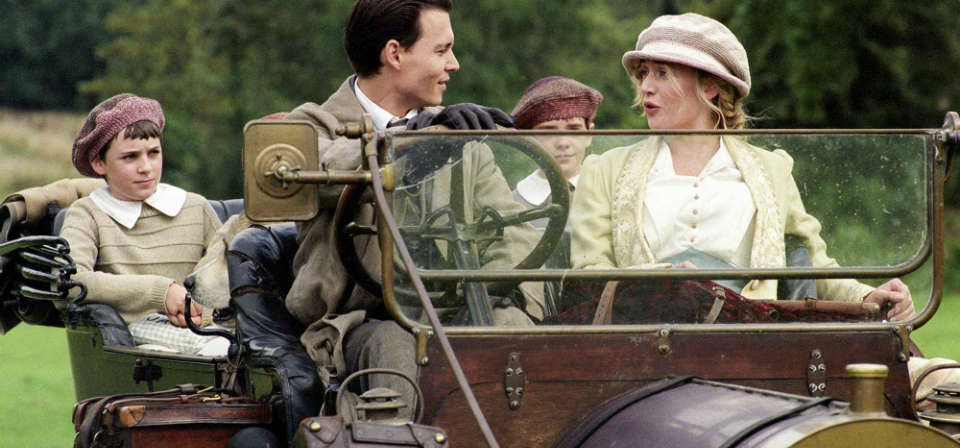
Finding Neverland (2004)
The film depicts Barrie coming into the Llewelyn Davies boys’ lives like Robin Williams into the lives of his students in Dead Poets Society. This isn’t a story about magical childhood soaring where no adult can follow, but about a magical adult imparting the gift of imagination to children.
The Thief of Bagdad (1924)
Rivaled only by the awesome Babylonian segments of D. W. Griffith’s Intolerance, Douglas Fairbanks’ lavish, extravagant The Thief of Bagdad ranks as the very pinnacle of silent-era spectacle.
Shall We Dance (2004)
In a society of rigid social codes and expectations that place more emphasis on duty than self-fulfillment and in which even holding hands between spouses is considered risqué, there is considerable intrigue in the protagonist’s unconventional, potentially profoundly embarrassing behavior.
Sinbad: Legend of the Seven Seas (2003)
With its swashbuckling action and blend of traditional and 3D computer animation, Sinbad most resembles Disney’s Treasure Planet — yet for once DreamWorks handily outdoes its archrival, with bravura action set pieces, a surprisingly complex romantic triangle, and an even more remarkably thoughtful exploration of moral issues and character.
The Shop Around the Corner (1940)
Who but Ernst Lubitsch could have pulled off such a winning romantic-comedy classic that dares to include, but is not marred by, such tragic undercurrents, with a frank subplot involving adultery, attempted suicide, and the collapse of a marriage?
Sky Captain and the World of Tomorrow (2004)
There are also plenty of film geeks who know and love the pulp fantasies of the early twentieth century, from Metropolis to the serialized swashbucklers of Buck Rogers and Flash Gordon. Some of these geeks are even creative enough to weave their own fantasies in the spirit of those classic films, even to the point of writing and directing the films themelves, though to date the only film actually made this way, as far as I know, is Star Wars. (Raiders of the Lost Ark, perhaps the ultimate serial-adventure homage, was conceived by George Lucas but written by Lawrence Kasdan and directed by Steven Spielberg.)
Hero (2002)
The story is pure Hong Kong melodrama, set at the dawn of the Chinese Imperial Era in the third century BC. … Yet there’s nothing even marginally conventional about Hero’s overpowering visual splendor, its effulgent riot of color and texture, its overwhelming spectacle of scale.
Ella Enchanted (2004)
Borrowing a page from Sleeping Beauty, therefore, Levine came up with the central dramatic conceit of her Newbery Honor-award winning book, Ella Enchanted: From her infancy Ella has been under a fairy curse (here bestowed in cluelessness rather than malice) obliging her to obey any imperative statement directed at her, from anyone. The moral of the story, in the author’s own words in interviews and letters to readers, is: "Don’t be too obedient!"
Vanity Fair (2004)
Mira Nair’s Vanity Fair is many things, but a howl to a congregation of fools isn’t one of them.
Spider-Man 2 (2004)
This is what a Spider-Man movie should be — freewheeling, rip-roaring, hilarious, heartfelt, over the top.
Metropolis (1927)
Surreal, sprawling, and operatic, drawing on biblical and medieval Christian imagery as well as H. G. Wells’s The Time Machine, Fritz Lang’s deeply influential pulp allegory Metropolis colonized a new realm of the imagination that has shaped subsequent science fiction from Flash Gordon to Star Wars, from "The Jetsons" to Blade Runner.
City Lights (1931)
City Lights is the quintessential Chaplin film — both the most perfectly crafted and satisfying of all his films, and also the most representative of all the different textures and tones for which Chaplin is remembered, from slapstick and pantomime to pathos and sentiment, farce and irreverence to melodrama and social commentary.
Spider-Man (2002)
From its breathless, cartoony title sequence, with the letters of cast members’ names stuck like flies in a vast spiderweb,
On the Waterfront (1954)
“A Going My Way with substance” is how Elia Kazan’s classic, controversial On the Waterfront was recently described in a lecture at Boston College.
Shrek 2 (2004)
If Pixar’s Toy Story movies connect with the child in all of us, DreamWorks’ Shrek pictures are aimed squarely at our inner adolescent. I suspect I may be more in touch with my inner child than my inner adolescent.
Shrek (2001)
Loosely based upon a story by children’s author William Steig (Sylvester and the Magic Pebble), Shrek is a satiric, updated fairy-tale love story, sort of like The Princess Bride, if André the Giant had been the hero, and had worn Lou Ferrigno body paint. And if Princess Buttercup did Matrix-style wire-fu and knocked out bad guys.
Troy (2004)
So long is the shadow of The Iliad over the history of Western literature that before considering the merits of Wolfgang Petersen’s Troy it may be helpful to recall that the story of the Trojan War was not only likely told by poets long before Homer, certainly after Homer it has been retold and reworked by numerous poets and writers, including Virgil, Euripides, Quintus, Chaucer, and Shakespeare.
Emma (1996)
If love makes the world go round, the dizzily whirling globe in the opening title credits of Douglas McGrath’s Emma is a clear statement of intent regarding the film’s theme. And when we see the globe is a painted model spinning on a thread in the hand of Emma (delightfully effervescent Gwyneth Paltrow), it’s clear how Emma sees herself — pulling the strings, orchestrating the happy convergences that make the world go round.
Little Women (1933)
Part comedy of manners, part morality tale, it’s more interested in its heroines “conquering themselves” than in a man conquering their hearts.
Eternal Sunshine of the Spotless Mind (2004)
Obviously, a Kaufman film called Eternal Sunshine of the Spotless Mind isn’t going to be as cheerful and wholesome as the title might suggest. Despair, isolation, and loneliness continue to hang like a fog across his world. Eternal Sunshine also resembles his other films in its characters’ milieu of general dissipation, casual sex, drug use, and so on.
The General (1927)
Arguably the greatest of Buster Keaton’s silent comedies, The General begins with a single, brilliantly sustained premise and works it into an engaging story that combines edge-of-your-seat excitement, stunningly conceived stunts and sight gags, spectacular set pieces, touching sentiment, and a rousing finale.
Heaven Knows, Mr. Allison (1957)
Like director John Huston’s similarly themed The African Queen, the film finds conflict mixed with romantic tension in a tale of a demure religious woman thrown together with a rugged male loner. Here, though, the complicating factor is not fastidiousness on the part of the religious woman, but the woman’s vocation.

The Court Jester (1956)
Not only does it terrifically succeed where movies like Mel Brooks’ Robin Hood: Men in Tights miserably fail, The Court Jester also as merry, high-spirited, and wholesome as the adventures it parodies, with none of the cynical, anarchic spirit (or content issues) of the likes of Monty Python and the Holy Grail.
Cyrano de Bergerac (1990)
Despite numerous cinematic adaptations — including Steve Martin’s cute romantic-comedy update Roxanne — the definitive Cyrano is probably Jean-Paul Rappeneau’s boisterous, full-blooded film, with France’s greatest actor, Gérard Depardieu, making the part forever his own.
Holiday (1938)
Why is The Philadelphia Story so well known, while the equally unforgettable Holiday, from the same director, writers, and leads, suffers comparative neglect?
The Road Home (2001)
The film knows that to a young girl hopelessly in love, this race is no grandly romantic gesture, but a matter of desperate necessity. She must, must catch the wagon; he must have the dumplings. Her future happiness depends upon it; all is lost if she fails.
The Navigator (1924)
Buster Keaton’s most popular vehicle in his own day, and said to be Keaton’s favorite of his own films, The Navigator isn’t as sophisticated and satisfying as his best work (e.g., The General), but it’s still brilliant slapstick comedy, with a rousing third act and a slam-bang climax.
Bringing Down the House (2003)
"Everything he ever needed to know," blurbs the tagline, "she learned in prison." More accurately, everything he ever needed to know, she learned in the ghetto; the larger point is that she has everything to teach and nothing to learn, and he has everything to learn and nothing to teach.
Holiday Inn (1942)
True to type, Crosby plays nice and Astaire shallow: Jim (Crosby) loves his dance partner and wants to marry her and settle down, but Ted (Astaire) wants to dance with her, and steals her away from Jim. Heartbroken, Jim retires to the Connecticut farm where he had hoped to settle down, but soon finds that show business is in his blood, and hits on the novel idea of turning his farmhouse into a dinner theater that operates only on holidays.
Oklahoma! (1955)
Oklahoma! was the first of Rodgers & Hammerstein’s musical collaborations, and it changed the face of musical theater.
Father Goose (1964)
Cary Grant cheerfully plays against a lifetime of typecasting in this modestly entertaining romantic comedy with comic echoes of The African Queen and Heaven Knows, Mr. Allison, directed by Ralph Nelson (The Lilies of the Field).
Platinum Blonde (1931)
This theme of romantically linking an upper-class society girl and a man beneath her station would become a popular device in screwball comedies, appealing to Depression audiences both as escapist entertainment and as satire of the idle rich and celebration of the hardworking poor.
Big Fish (2003)
Like Haley Joel Osment in Secondhand Lions wanting to know the truth about the tales of his uncles’ alleged exploits, Ed’s son Will (Billy Crudup) wants to know whether his dying father really was a Big Fish in a small pond, or whether his father’s tales were just Big Fish stories. Big Fish also echoes Secondhand Lions by ending with a funeral scene that provides some answers as Will finally meets certain individuals from his father’s past.
Elf (2003)
(Written by Jimmy Akin) Elves love to tell stories, or so Papa Elf (Bob Newhart) tells us at the beginning of this elf story. It is an unusual tale in that it is the other side of all the changeling stories that have circulated in folklore for centuries. Instead of being the tale of a fairy raised among mankind, it is the story of a human raised among elves.
Top Hat (1935)
The quintessential Fred-and-Ginger vehicle, Top Hat features some of the most glorious, memorable dance sequences ever filmed.
I.Q. (1994)
Meg Ryan and Tim Robbins are cast somewhat against type: Ryan often plays bubbleheaded and Robbins brainy, but here Ryan is a science whiz, if a bubbly one, while Robbins is a grease monkey, if a thoughtful one. The real twist, though, is that Catherine (Ryan) happens to be the niece of Albert Einstein — and, while she has a brainy fiancé, he’s a twit, and her uncle Albert decides that she really needs someone like Ed.
Pirates of the Caribbean: The Curse of the Black Pearl (2003)
The most remarkable thing about Pirates of the Caribbean: The Curse of the Black Pearl is neither Johnny Depp’s mesmerizing performance, nor ILM’s literally eye-popping skeletal ghost-ship crew, but the sheer fact that the movie works at all.
The Santa Clause 2 (2002)
Like those MasterCard ads that, while admitting that “there are some things that money can’t buy,” still manage to suggest that even these things are somehow among the many benefits of using MasterCard, The Santa Clause 2 is strangely reticent about the idea that Christmas is ultimately about anything other than presents from the red-suited guy.
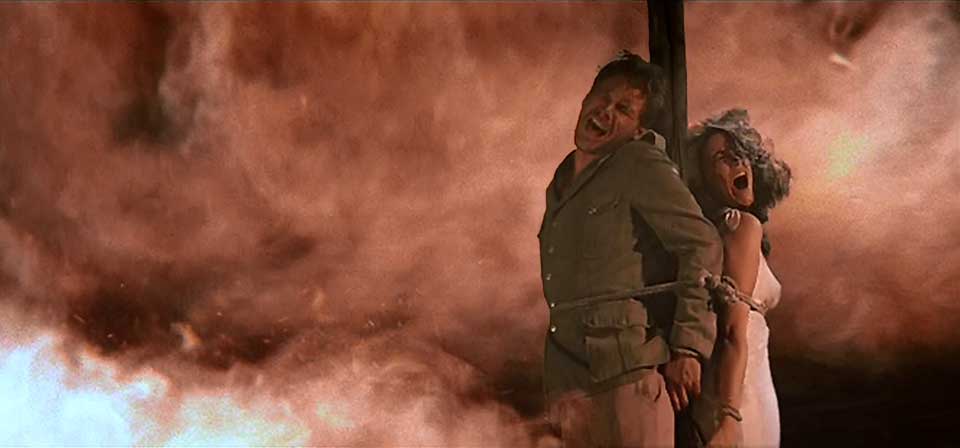
Raiders of the Lost Ark (1981)
Like the Paramount logo mountain peak in the now-famous opening dissolve that started it all nearly three decades ago, Raiders of the Lost Ark towers over the surrounding landscape. It is the apotheosis of its genre, the Citizen Kane of pulp action–adventure, definitively summing up all that came before and setting the indelible standard for all that comes after.
The Adventures of Robin Hood (1938)
The story is the classic Robin Hood tale, and it’s all here: the fateful shooting of the King’s deer; Robin’s ignominious duckings upon his first meetings with Little John (Alan Hale) and Friar Tuck (Eugene Pallette); Robin’s penchant for entertaining wealthy victims in high Sherwood style before relieving them of their gold; the trap archery contest which a disguised Robin wins by splitting his opponent’s arrow; the return of Richard (Ian Hunter) from the Crusades disguised in monk’s attire.
Don Q Son of Zorro (1925)
Don Q Son of Zorro, named one of the year’s ten best films by The New York Times, actually outdoes its predecessor, with a stronger and more sophisticated plot, better pacing, more interesting and complex characterizations, grander production values and set design, and more consistent action.
The Mark of Zorro (1920)
You haven’t seen Zorro until you’ve seen Douglas Fairbanks Sr. as Zorro in the 1920 silent swashbuckling classic.
The Mark of Zorro (1940)
Powers can’t match the original Zorro’s astonishing acrobatics and doesn’t try — but the rousing climactic duel against Basil Rathbone’s villainous Captain Esteban, one of the best swordfights ever filmed at that time, almost makes up for it.
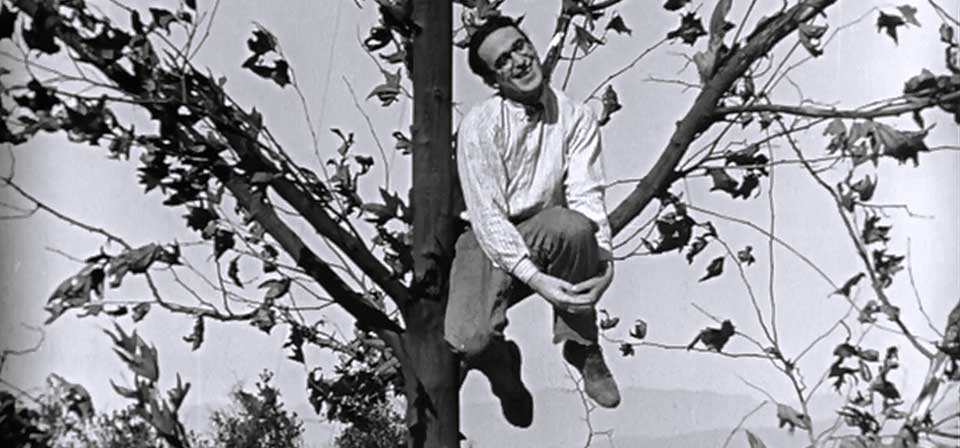
The Kid Brother (1927)
As a first introduction to silent film, I would pick The Kid Brother over the best of Chaplin (Modern Times, City Lights) or Keaton (The General, Steamboat Bill, Jr.) every time.
The Count of Monte Cristo (2002)
Like The Mask of Zorro, Monte Cristo balances its anachronistic sensibilities and over-the-top set pieces with genuine emotion and a real moral dimension — even, in Monte Cristo, a spiritual dimension. This is an action movie that’s also a morality play, a tale of injustice and vengeance that actually reckons on God, faith, and divine justice.
It Happened One Night (1934)
She’s fleeing from her concerned father (Walter Connolly) and returning to the shiftless beau (Jameson Thomas) she married in a civil ceremony to spite her father (who had her whisked away from the service, so it’s not final legally or sacramentally).
Sabrina (1954)
The prologue, with its storybook-like, slightly arch voiceover narration finely read by Audrey Hepburn, suggests a charming fairy tale with a satiric subtext. And, indeed, Sabrina, Billy Wilder’s delightful romantic comedy starring Hepburn, Humphrey Bogart, and William Holden, is a sort of Cinderella story, with a chauffeur’s daughter who is transformed into the belle of the ball and dances with the prince — except that the "prince" is, if not a beast, at least a shallow cad, while the real love interest is almost more a frog than a prince.
Bringing Up Baby (1942)
The zaniest, most delightful, most romantic screwball comedy of them all, Bringing Up Baby features Katherine Hepburn at her effervescent best and Cary Grant in a marvelous performance combining stuffiness and injured dignity with his usual debonair charm.
Knights of the Round Table (1953)
The story starts a bit stiffly with the tale of Arthur’s rise to power, beginning with the adult Arthur (Mel Ferrer) and rival Mordred (Stanley Baker) meeting at the sword in the stone with their respective advocates, Merlin (Felix Aylmer) and Morgan le Fey (Anne Crawford). Things improve with the arrival of Lancelot (Robert Taylor), who even before meeting Arthur is willing to die for him and his ideals of chivalry, courtesy, and virtue.
Open Range (2003)
Gunplay is largely restricted to a single, lengthy sequence; and, where in a typical action movie thousands of bullets might be expended without anyone in the audience batting an eye, in this film every bullet counts, and the viewer feels its impact.

Roman Holiday (1953)
Audrey Hepburn is utterly beguiling in her star-making role opposite Gregory Peck in Roman Holiday, a delightful romantic comedy about a poised young princess of an unspecified European country who spends a magical day with an American reporter (Gregory Peck) in the Eternal City, playing hooky from her official duties.
Freaky Friday (2003)
(Co-written with Suzanne E. Greydanus) In the very end there’s a scene in which Anna’s grandfather (thrown into the movie as a hard-of-hearing joke) is lamenting that “youth is wasted on the young.” Too bad the makers of this new Freaky Friday forgot that.
Monsieur Beaucaire (1946)
Beaucaire (Hope) is barber to Louis XV of France — until the former’s romantic altercations with a chambermaid named Mimi (Joan Caulfield) inadvertently result in banishment for both Mimi and himself. At the same time, the king finds it expedient to rid the court of the Duc le Chandre, a renowned swordsman and celebrated ladies’ man, by making a political marriage between le Chandre and Princess Maria of Spain (Marjorie Reynolds).

Road to Morocco (1942)
This time out the boys take their Road act to Arabian Nights territory, where, as usual, they sing (especially Bing), crack wise (especially Bob), and vie over Lamour, who again has an agenda of her own. The story, which is taken about as seriously as the plot of a typical Looney Tunes cartoon, has Bing and Bob shipwrecked and washed up on the road to Morocco.
My Favorite Blonde (1942)
One of Bob Hope’s best comic-thriller vehicles, My Favorite Blonde benefits from its semi-serious spy-thriller ambiance, tolerably cogent plot, scene-stealing penguin, and above all one of the more human, less caricatured, less one-dimensionally narcissistic characters in Hope’s movie oeuvre.
The Philadelphia Story (1940)
Like the heroines of The Awful Truth and His Girl Friday, Katherine Hepburn plays a divorcée caught between flawed ex-husband Cary Grant and a respectable but somehow unsuitable fiancé (John Howard). But The Philadelphia Story goes beyond the formula by throwing in surprise contender Jimmy Stewart as a disgruntled novelist-reporter — an unexpected source of conflict and uncertainty that eliminates the need for Grant to resort to the underhanded tricks he needed to show up his rivals in Awful Truth and Girl Friday.
My Big Fat Greek Wedding (2002)
From a moral-spiritual perspective, the film has two flaws: It takes an indulgent view of the couple’s premarital intimacy, and it depicts the groom-to-be’s Greek Orthodox baptism in purely cultural, non-religious terms ("I’m Greek now," he says afterwards). Fortunately, these isolated lapses are more than overshadowed by the film’s redemptive pro-family themes, memorably summed up by Toula’s father in a final speech full of genuine warmth.
Punch-Drunk Love (2002)
Regarding Punch-Drunk Love, much has been made of the sense of not knowing what’s going to happen next. Anderson’s opening scene is like a manifesto of unpredictability. Opening with a phone conversation in a stark warehouse space, the scene follows Barry Egan (Sandler) outdoors, where the morning waits in expectant silence for the day to begin, as the audience waits for the movie to begin. What kind of day will it be? What sort of movie are we watching?
An American in Paris (1953)
In a conceit both touching and surreal, Kelly plays an American ex-G.I. in Paris who’s never wanted anything but to paint, though he’s obviously the best hoofer in France.
The Animal (2001)
Funnier, perhaps, than anything in The Animal - which isn’t saying much - are the opportunities for critics to make "Survivor" jokes inspired by the presence of costar Colleen Haskell, the elfin-faced young thing who became a celebrity during the course of the CBS monster hit.
Casablanca (1942)
The result of this somewhat haphazard collaboration is a breathtaking creative synergy, a perfect storm in which everything happened to come together with magical rightness. The sparkling script balances wittily cynical dialogue, weepy sentimentalism and clear-eyed idealism. The characters that matter are credibly, even seriously flawed, yet remain deeply sympathetic and open to redemption. The tightly crafted plot is at once intricate and elegant, at turns rollicking and stirring, and the snappy storytelling doesn’t come at the expense of rich, moody atmosphere. The top-notch cast are at the top of their games, and the timeless score accents a classic wartime melodrama that hasn’t lost a thing as time goes by.
Charade (1963)
Often described as "the best Hitchcock movie Hitchcock never made," Charade stars Cary Grant and Audrey Hepburn in a sparkling thriller with overtones of screwball romantic comedy — or is it the other way around?
Gangs of New York (2002)
That book, with its breathless vignettes of the 19th-century lower Manhattan underworld, has no central plot or unifying storyline. Similarly, the most striking moments in Scorsese’s film come as glimpses into that time and place. When we see hordes of immigrants milling about in the unguessed catacombs beneath the Old Brewery of the Five Points neighborhood, or rival fire brigades brawling in the streets rather than fighting the fire, it’s easy to feel that here, surely, is a dark and strange world that would be interesting to explore, a world in which memorable stories must have taken place.
Moulin Rouge! (2001)
Damning with faint praise? More like praising with faint damns. Moulin Rouge! is a failure: a towering monument of wasted potential, of lost opportunity, of good ideas gone bad and bad ideas gone amok. It’s got the same attention-grabbing take-no-prisoners style (though on a far larger scale) as Luhrmann’s first film, the sublime Strictly Ballroom; but that film had something Moulin Rouge! can’t be bothered with: characters who emerged from their situations as real and likeable people. Moulin Rouge! even recycles plot elements from the earlier film: A naive but talented young outsider falls for a driven, unattainable professional whose Svengali-like handlers oppose the relationship for self-interested reasons. There’s even a climactic scene that mirrors the grand finale of Ballroom in such specific detail that Luhrmann could sue himself for plagiarism; but what he can’t replicate is the first film’s heart appeal.
Alex and Emma (2003)
Take Two: The big problem: Neither set of romantic entanglements is actually romantic, and neither set of characters is interesting. Nonmarital affairs in both storylines include an energetic though non-explicit bedroom scene played for laughs.
Two Weeks Notice (2002)
(Written by Jimmy Akin) From its opening minutes, Two Weeks Notice promises to be the story of how two mismatched, lovable losers get together and fall in love.
Bruce Almighty (2003)
Theologically speaking, the question was absurd and meaningless; but the answer, I think, contained profound insight. God is both the source and the goal of our being, the meaning as well as the master of our lives. Imagine reality without God, and life becomes meaningless; imagine divine omnipotence at the disposal of anything other than divine love, and existence becomes infinite horror.
Bend It Like Beckham (2002)
Movie audiences reliably enjoy just about every ingredient involved in Bend It Like Beckham, an East-meets-West comedy about an Indian family living in London’s Hounslow borough.
What a Girl Wants (2003)
Despite these similarities, What a Girl Wants differs from The Princess Diaries in three important respects, all of which are, as far as they go, good ideas.
The Princess Diaries (2001)
Everyone knows going in that Hathaway’s frizzy hair, horn-rimmed glasses, pratfalls, slouch, and puckered expressions aren’t going to hold her back for long. (Indeed, it takes a formidable effort to suspend one’s disbelief and accept that they hold her back at all. Hathaway manages to be suitably awkward in the medium shots, but every closeup blows the girl’s cover by revealing her cover-girl beauty. Casting the gorgeous 20-year-old "Get Real" actress as an 15-year-old ugly duckling is about as plausible as Jennifer Lopez playing a wedding planner who can’t get a date or Drew Barrymore playing a late bloomer who’s Never Been Kissed.)
Maid in Manhattan (2002)
He’s a wealthy, unattached scion of a political dynasty; she’s a hard-working maid whose mother and workplace "sisters" discourage her from yearning for more. An updated "Cinderella" story in the Pretty Woman mold, Wayne Wang’s Maid in Manhattan (Columbia) makes agreeably diverting viewing for most of its 105-minute running time, though after the magic runs out at midnight the movie meanders through an autopilot resolution that lacks a glass slipper.
Moonlight Mile (2002)
This might seem an odd way to put it, but writer-director Brad Silberling’s Moonlight Mile could be thought of as a kind of backwards mirror-image of writer-star Nia Vardalos’s indie hit, My Big Fat Greek Wedding.
Daredevil (2003)
Ultimately, Daredevil works best as a triumph of screenwriting redaction and well-utilized effects over weak characterization and generally uninspired casting. As super-hero movies go, I rank it below Spider-Man, but above any of the films in the Batman franchise.
How To Lose a Guy In 10 Days (2003)
Now, the top of the Empire State Building is a lofty destination, an end in itself. By contrast, a bridge is only for going from one place and another. Like all of New York’s major river crossings, the Manhattan Bridge is undeniably a marvel of modern engineering; but for romance and evocative appeal, the Empire State Building surely has the edge by a considerable margin.
Kangaroo Jack (2003)
Now at last, from the creators of Coyote Ugly, comes the culmination of this trend: the action-comedy with black star, white star, love interest, talking kangaroo, flatulent camels, and poop jokes. Yes, it’s Kangaroo Jack — the world’s first family romantic action-comedy cross-racial buddy gross-out flick.
Nurse Betty (2000)
In the end, how you feel about Nurse Betty will in good part depend, I suppose, upon whom you agree with, Charlie or Wesley. If you find Betty as enchanting and remarkable as Charlie does, then you may be relieved and happy when her troubles are over and she is at last able to realize her dreams. On the other hand, if like Wesley you regard her as ridiculous and pathetic, then you will find this movie a contemptuously hateful tale of cruelty and delusion, devoid of any spark of sympathy or compassion.
Tuck Everlasting (2002)
The story, originally set in 1880 but moved to 1914 for the movie, concerns a sheltered young girl from a well-to-do family who is called "Winifred" by her overprotective parents and grandmother, and might be called "Winnie" by her friends if she had any. Winnie (Alexis Bledel of TV’s "Gilmore Girls") is so timid that when she decides to run away from home, she heads for the family-owned woods adjacent to her house, never actually setting foot off her parents’ property.
Amélie (2001)
Like the similarly acclaimed Moulin Rouge!, Jean-Pierre Jeunet’s Amélie is a whimsical, hyperactive, self-aware, lavishly overdesigned fantasy-romance, set in a retro, fairy-tale Paris, about a tender young idealist who falls in love with a sex-industry employee — but there the similarities end.
Crouching Tiger, Hidden Dragon (2000)
The story is said to be set in 19th-century China, but its roots are older, reaching for a mythic age of larger-than-life heroes and superhuman derring-do. Heroes with paranormal abilities were also a theme of the recent Unbreakable; but Crouching Tiger, Hidden Dragon has what was lacking in Unbreakable: a sense of wonder, of exhilaration, of mystery and beauty and hope.

Modern Times (1936)
Silent films were already old-fashioned and out of vogue in 1936 when Charlie Chaplin completed his last silent feature film, Modern Times, almost ten years after the sound revolution began with The Jazz Singer. A silent film consciously made for the sound era, Modern Times is a comic masterpiece that remains approachable today even for movie lovers raised on computer imaging and surround sound.
Life or Something Like It (2002)
Meet Pete (Ed Burns). He’s a cameraman who dresses and behaves in slacker fashion, drinks beer on the job, sleeps around, and says rude things to Lanie. This means he’s an alright guy who Does Know How to Have Fun.
Mumford (1999)
It’s not hard to play connect-the-dots and pair off likable characters with one another. It’s harder to put them in a story that’s worthwhile. This is a film without conviction, about a town full of people with problems without depth, aided by a guru without soul. Mumford is a fraud. Take that in whatever sense you like.
Monsoon Wedding (2001)
This is one feel-good film that earns its goodwill honestly — not glossing over the harder realities and transgressions that afflict family life, but instead making the case that, however exasperating and even dysfunctional one’s family may happen to be, family remains very close to the center of things. Not just "family" in the abstract, either, or as an ideal, but the reality of family as we actually experience it.
What Women Want (2000)
Women are from Venus; men are from the gutter.
A Walk to Remember (2002)
Like its heroine Jamie, A Walk to Remember is pious, wholesome, and eminently open to mockery and derision. Also like its heroine, it doesn’t care what people think of it.
Tortilla Soup (2001)
Tortilla Soup isn’t the delicacy that Eat Drink Man Woman was, nor does it compare with the exquisite meals prepared by the patriarchs of either film. But on the level of comfort food this remake is enjoyable enough, unless of course you’re a purist conoisseur like Martin. Watching it, I laughed out loud any number of times, and so did others in the theater.
The Time Machine (2002)
The Time Machine is so sloppy that it makes Kate and Leopold look like Back to the Future. It’s also pitiful entertainment, succeeding neither as spectacle, as action-adventure, or as love story.
Singin’ in the Rain (1952)
Celebrating its 60th anniversary in style, Singin’ in the Rain comes to Blu-ray with an astoundingly good-looking new transfer of the best available film elements.
Return to Me (2000)
The pious, folksy Irish and Italian Catholicism of Carroll O’Connor and his cronies isn’t there for the sake of either mockery or preachiness, but is simply taken for granted, just as it might have been in a film of this sort from fifty years ago, when they still made them. The story also takes for granted (indeed, depends upon) the fact that the hero and the heroine manage to fall in love and grow together without taking their clothes off.
Pearl Harbor (2001)
Yet whereas Titanic was the work of a master manipulator, a man with a special genius for making cheesy melodrama seem moving and gripping, Michael Bay has so far in his career shown no competence for anything but pyrotechnics. Cameron’s film shrewdly focused on its three leads (Leonardo DiCaprio, Kate Winslet, and Billy Zane), all of whom are gifted with real charisma and screen presence. Pearl Harbor, however, is burdened by a sprawling cast of characters, led by Ben Affleck (another Armageddon alum), who’s as blandly generic as no-name corn flakes — and doesn’t even compensate by taking likeable roles. Affleck’s out-acted by relative unknown Josh Hartnett (Blow Dry), the best friend and romantic rival (even though Hartnett’s character is equally underwritten); he’ll be opening movies himself before long.
Life is Beautiful (1997)
Contriving to hide the boy from camp officials (who soon put the other children to death), Guido tells Giosue that the concentration camp is actually an elaborate role-playing game in which the "players" are competing for points in the hopes of winning a real battle tank. From then on, Guido will take any risk, court any danger, to maintain his son’s illusion that none of it is real.
Kate and Leopold (2001)
Whenever Kate and Leopold is about Kate and Leopold (Meg Ryan and Hugh Jackman, respectively), it just about works.
The Family Man (2000)
If it were only predictable, syrupy, and overlong, The Family Man might still be worth watching for the appealing performances from Leoni and Cage. Alas, its problems are more deep-rooted than that.

The Dish (2000)
The Dish is closer in spirit to gentle British and Irish comedies like Waking Ned Devine and The Matchmaker than more characteristically edgy Australian comedies such as Strictly Ballroom, Muriel’s Wedding, and Priscilla, Queen of the Desert. Sam Neill, leading the Australian cast, sets the tone; his deliberate, relaxed performance as Cliff is at the center of the film, as he plays Andy Griffith to the residents of this down-under Mayberry.
The Notebook (2004)
See Noah (Ryan Gosling) and Allie (Rachel McAdams) lie in the middle of a darkened intersection watching the traffic light change, then scramble for safety when a car comes! See Allie enjoying post-coital oil painting in the nude, wrapped in a sheet on the porch!
Recent
- Benoit Blanc goes to church: Mysteries and faith in Wake Up Dead Man
- Are there too many Jesus movies?
- Antidote to the digital revolution: Carlo Acutis: Roadmap to Reality
- “Not I, But God”: Interview with Carlo Acutis: Roadmap to Reality director Tim Moriarty
- Gunn’s Superman is silly and sincere, and that’s good. It could be smarter.
Home Video
Copyright © 2000– Steven D. Greydanus. All rights reserved.